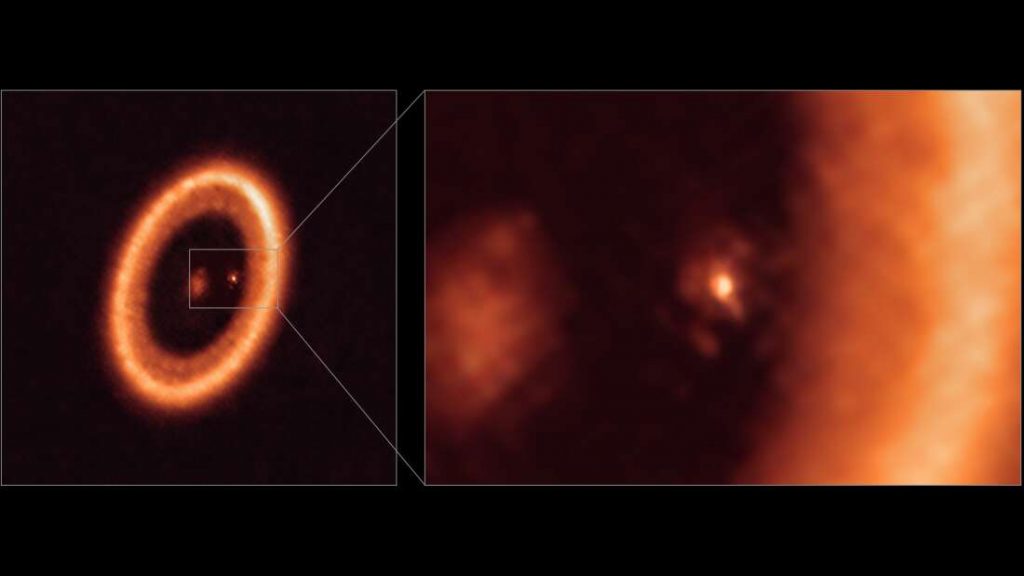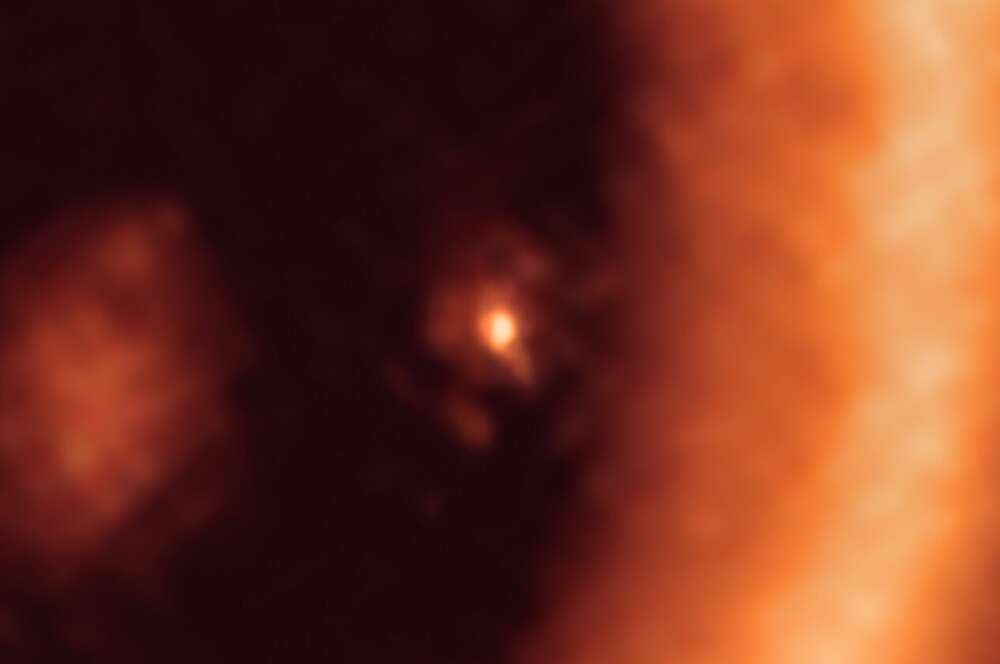PDS 70 is a 370-light-year-distance star that is almost 6 million years old and has a mass roughly three-quarters that of the Sun. Two years ago astronomers spotted what they thought might be a moon-forming disk around PDS 70b, its largest planet. However, because there was still a lot of gas and dust swirling around the system, it was difficult to see the disk against the background, leaving the discovery unconfirmed. The images were definitely not clear enough to learn anything about the disk, such as its size or mass.
Dr Myriam Benisty of the University of Grenoble gained time on the Atacama Large Millimetre/submillimeter Array (ALMA) to attempt to verify. In The Astrophysical Journal Letters, she reports stunning success. “Our ALMA observations were obtained at such exquisite resolution that we could clearly identify that the disc is associated with the planet and we are able to constrain its size for the first time,” Benisty said in a statement. However, the disk she found is around a smaller planet PFS 70c – the suspected disk around PDS 70b turns out to be an illusion.


You’re wrong if you imagine a disk the size of Saturn’s rings, or even the orbit of Jupiter’s largest moons. Instead, the disk has a radius of 86–180 million kilometers (53–112 million miles), or 0.58–1.2 times the Earth-Sun distance. It has enough material, according to Benisty and co-authors, to produce three Earth-sized moons. Unless the disc grows further, PDS 70c will never match Jupiter’s moon collection, with the big four having almost twice this mass between them, despite PDS 70c being 1–10 times Jupiter’s mass.
PDS 70 is one of the few star systems so young its planets are still hot enough we can see them directly, and particularly unusual in having two planets visible like this. The system has plenty more material further out, some of it distorted in ways consistent with a Saturn-sized world lurking in the outer darkness.
“More than 4,000 exoplanets have been found until now, but all of them were detected in mature systems,” Miriam Keppler, study co-author and researcher at the Max Planck Institute for Astronomy said in the same statement. Not so for the two planets observed by the current research. “PDS 70b and PDS 70c, which form a system reminiscent of the Jupiter-Saturn pair, are the only two exoplanets detected so far that are still in the process of being formed.”
Finding two even more massive planets already locked in a resonance like this could improve the understanding of this process. Currently PDS 70c orbits 34au from its star (further than Neptune) while its larger sibling is at 22au, similar to Uranus.





